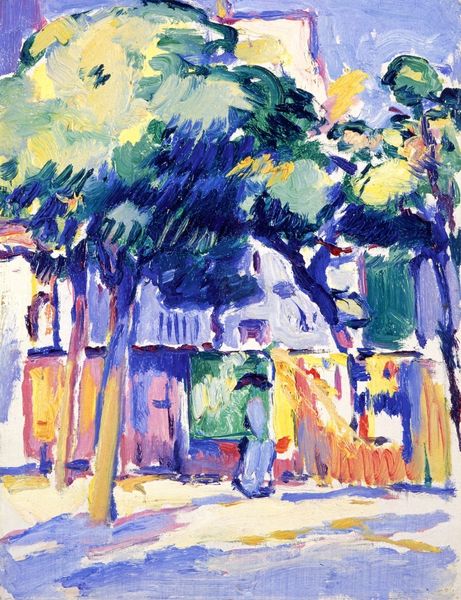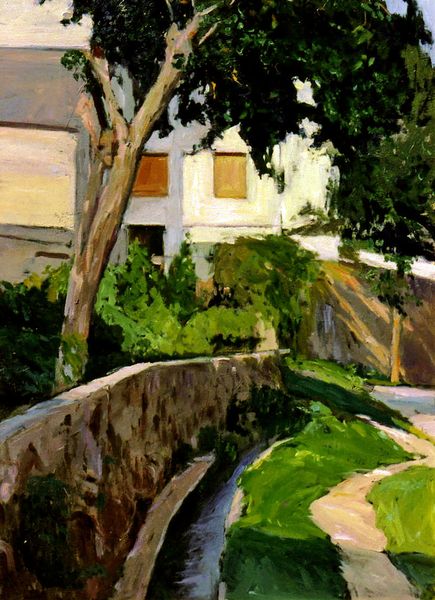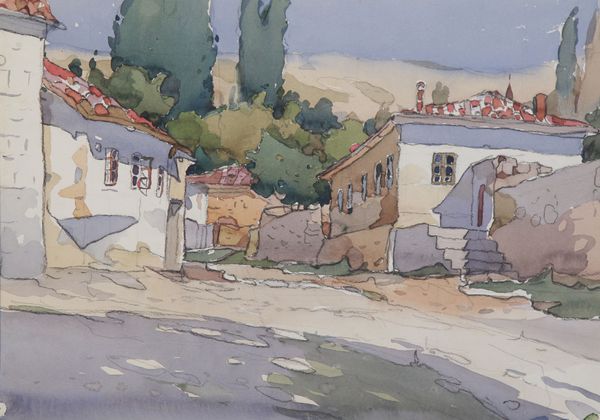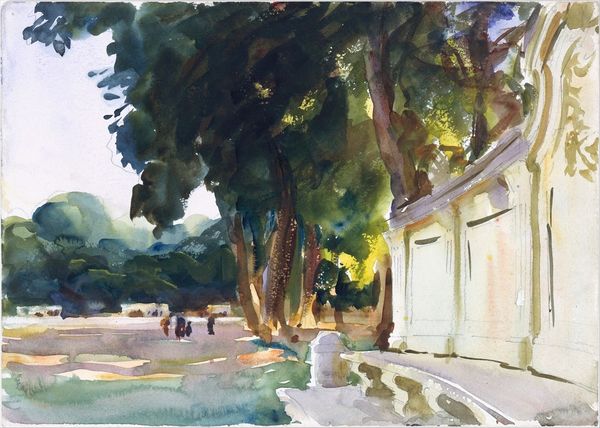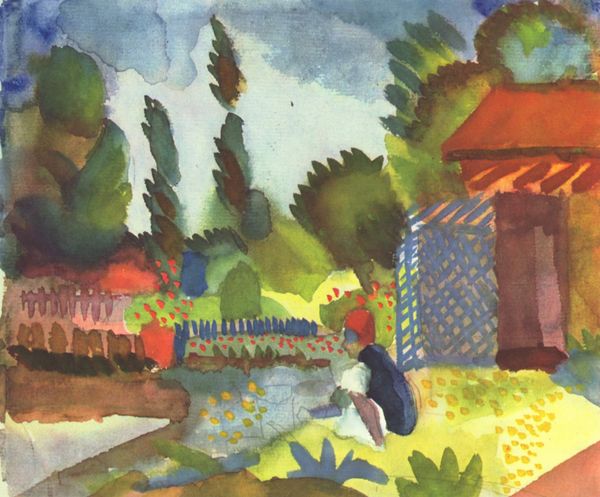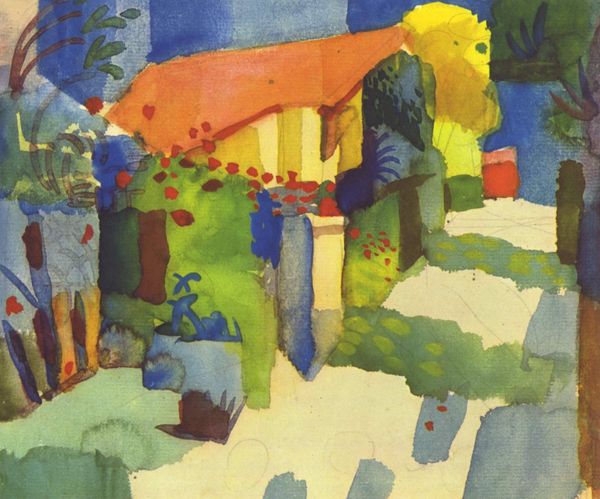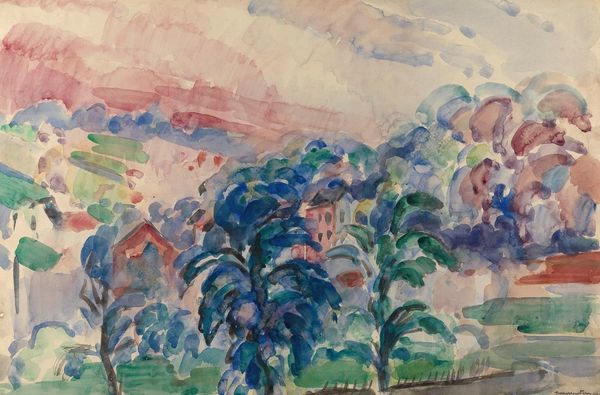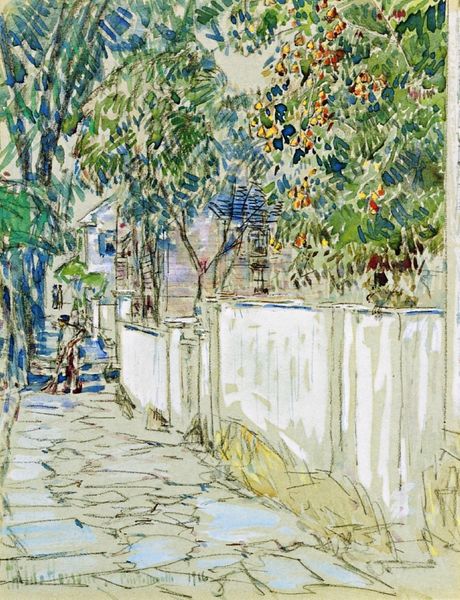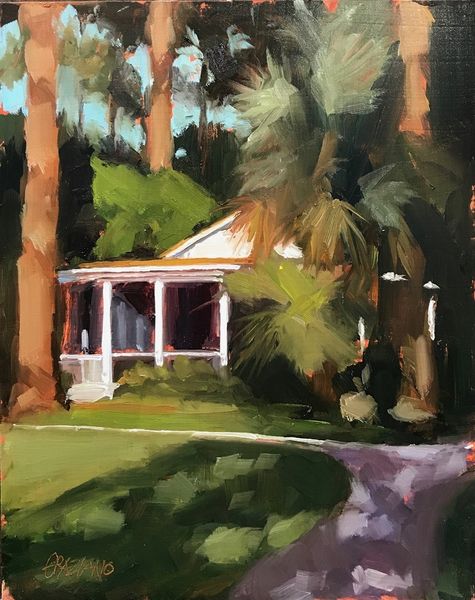
painting, oil-paint
#
painting
#
oil-paint
#
landscape
#
house
#
impressionist landscape
#
oil painting
#
expressionism
#
cityscape
#
modernism
#
expressionist
Copyright: Public domain
Editor: This is Samuel Peploe's "The Aloe Tree," painted in 1924 using oil paints. The bright colors and visible brushstrokes give it an almost dreamlike quality. I am curious to learn about how Peploe chose the medium and technique in the depiction of landscape and cityscape; how should we read it in this work? Curator: Let's consider the materiality of this piece. Peploe’s choice of oil paint is significant, offering a plasticity that aligns with early 20th-century artistic values as painting was still perceived as an industry and the material was a core and fundamental instrument. How does his application of paint, thick and expressive, alter our perception, you think? Does the lack of finish represent, for you, perhaps, the commodification of nature within modern life? Editor: That’s interesting. The roughness of the paint definitely emphasizes a sense of immediacy. Maybe he’s suggesting the fleeting nature of our experience with the natural world, influenced by labor relations? Curator: Exactly. Think about the historical context too. Modernism reflected rapid industrialization, with increased anxieties about mass production and alienation, impacting all social classes. So, how might the painting function as a material object that enters into those market exchange networks, either reflecting or resisting them? Editor: I hadn’t thought about it that way before. So, we’re not just seeing a landscape, but also an argument about art's role within consumer society and, in parallel, the redefinition of art categories, between labor and intelectual production. Curator: Precisely. By emphasizing the material process of production, the painting becomes an explicit engagement with art and labour. Editor: Seeing it in terms of the process and its place in society makes me appreciate how loaded a seemingly simple landscape can be. Curator: Absolutely, it urges us to confront assumptions about beauty and fine art through their own production. It offers the possibility for broader questions concerning the definition of 'fine art'.
Comments
No comments
Be the first to comment and join the conversation on the ultimate creative platform.
